Editor’s Note
Joanne HarmonWe have a fantastic edition for our members this month. Starting with a big shout out to Emily Moore as the next APS scholarship candidate. Well done and congratulations. Cannot wait to see your work on how children living with cerebral palsy and complex communication needs can better self-report their pain.

We are excited to announce the Australian Pain Society 2023 conference (2-5 April), Early Bird registrations will open on 15 November. Please complete the Expression of Interest form and send it off, as this I have always found, is the best way to stay informed and be kept up to date with any changes. So totally put that one into your diary and while you are thinking about it, now is the time to also put those requests into your roster for those days off. Nothing like being the early bird to catch the worm. Explore the Pre-Conference Workshops and check out the available opportunities to keep up to date with all things pain related.
In this edition of the newsletter, we have Dr Kevin Wernli share how important it was for him to gain an APS travel grant. Such an inspiring and uplifting story of how he came to Hobart all the way from WA, and was able to not only present, but also network.
The Basic Pain Research Special Interest Group (BPR SIG) has got your research interests covered. Save the date: 12-1pm AEDT Wednesday 23 November - the topic of the next BPR Pain Hour will be “Transcriptomic and physiological characterization of human sensory neurons that transduce pain and itch” via zoom. All are welcome, this includes postgraduate students. Also check out the BPR SIG Journal Watch review on the topic of “Soft, bioresorbable coolers for reversible conduction block of peripheral nerves” article. This is
a great read on a novel form of peripheral neuromodulation that delivers cooling as opposed to an electrical stimulation to the sciatic nerve.
BLOG WEBUp for some great holiday reading or want to start your Christmas shopping early? Then you cannot go past Zoe and Zac’s Pain Hacks Book Series 1-5. Such a valuable resource for children, these books are designed to help them learn and talk about their pain. Speaking of paediatrics, check out the recent paper published in the Canadian Journal of Nursing Research on the quality improvement project on pain management at a tertiary paediatric hospital. An interesting finding was the patient reports of moderate to severe pain experiences during their hospitalization. Qualitative research is so very fundamental in gaining client perspectives, and this aspect is also explored in the recent publication on opioid deprescribing study showcasing the perspectives of those with non-cancer pain. Barriers and facilitators are presented along with capturing of the perceptions of on having insufficient alternatives and how deprescribing is a unique experience for everyone. Keep those publications rolling in, we love to share your work and provide opportunities for translation of research into practice.
Who are you and what is it that you do? We have a great new opportunity for you to share with us what makes you tick, and what ticks you off about all things pain wise. Take the challenge and send us an email to be in the member spotlight. Big or small, busy or quiet, remote or metro- we would love to hear from you!
Until next time
JoanneRegistrations Open 15 November
Get in early and secure your place at Australia’s only multidisciplinary conference offering insights into the complex nature of pain management from a variety of medical, nursing, and allied health perspectives.

the Expression of Interest form to be kept up to date with conference news as it becomes available.
Tell your colleagues who are interested in becoming members so they can save on their registrations too!
Program Coming Soon
The APS Scientific Program Committee is delighted to bring you an exciting program ‘in the IASP Global Year for Integrative Pain Care’.
You can look forward to an extensive program including 6 pre-conference workshops, 2 international speakers, 7 national speakers, 18 topical sessions and 3 social functions.
Follow the links to start planning your conference experience today!
Program Overview
Keynote Speakers
Pre-Conference Workshops
Social Program
For information on APS 2023 please visit the website
We look forward to welcoming you to Canberra, ACT!

2023 AUSTRALIAN PAIN SOCIETY 43RD ANNUAL SCIENTIFIC MEETING
In the IASP Global Year for Integrative Pain Care
PAIN IN CHILDHOOD PRE-CONFERENCE WORKSHOP
8.30am – 12.30pm, Sunday 2 April 2023
National Convention Centre Canberra, ACT
Registration Fees starting from $160
Workshop Overview
This workshop will explore the use of lignocaine infusions in acute and chronic pain conditions, discussion and findings from the recent RAPID study – looking at the effectiveness and adverse effects of medications used in palliative care and pain management.
Finally, enjoy a deep dive into chronic lower limb pain conditions in children and adolescents. Join researchers for an interactive session as they develop guidelines and priorities for this condition.
For further information, visit: www.dcconferences.com.au/aps2023
Questions? Please email us at apsasm@dcconferences.com.au
BASIC PAIN RESEARCH PRE-CONFERENCE WORKSHOP
2023 AUSTRALIAN PAIN SOCIETY
43RD ANNUAL SCIENTIFIC MEETING
In the IASP Global Year for Integrative Pain Care
1.30pm – 5.00pm, Sunday 2 April 2023
National Convention Centre Canberra, ACT
Registration Fees starting from $160
This workshop will showcase the latest in Australian basic pain research from early career and senior researchers, and provide a forum to discuss mechanisms of nociception and pain across all levels of investigation: from molecular and cellular analyses, to studies in animals and humans (pre-clinical or clinical).
The workshop is open to all interested in mechanisms of nociception and pain, including basic and clinical researchers, health professionals and students at all levels.
For further information, visit: www.dcconferences.com.au/aps2023
Questions? Please email us at apsasm@dcconferences.com.au
FUNDAMENTALS OF PAIN PRE-CONFERENCE WORKSHOP
2023 AUSTRALIAN PAIN SOCIETY 43RD ANNUAL SCIENTIFIC MEETING




In the IASP Global Year for Integrative Pain Care
8.30am – 12.30pm, Sunday 2 April 2023
National Convention Centre Canberra, ACT
Registration Fees starting from $160
Workshop Overview
The Foundations of Pain pre-conference workshop is a succinct overview of the physiology, clinical assessment, and clinical management of pain. The workshop is aimed at the general practitioner, specialist, allied health clinician or psychologist looking for an introduction to, or update on, persistent pain management. This workshop is grounded in a biopsychosocial understanding of pain mechanisms and developing a mechanism-based approach to pain assessment and management. This workshop will compliment those with an interest in attending an afternoon session of pharmacology, acute pain or physiotherapy topics.
For further information, visit: www.dcconferences.com.au/aps2023
Questions? Please email us at apsasm@dcconferences.com.au
2023 AUSTRALIAN PAIN SOCIETY 43RD ANNUAL SCIENTIFIC MEETING
In the IASP Global Year for Integrative Pain Care
ACUTE PAIN PRE-CONFERENCE WORKSHOP

8.30am – 5.00pm, Sunday 2 April 2023
National Convention Centre Canberra, ACT
Registration Fees starting from $160
Workshop Overview
Join us in this broad-based workshop to suit all knowledge levels and a variety of specialist areas with a multi-disciplinary focus in the field of Acute Pain Management. The aim is to share information, evidence, and our experiences with a focus on a pragmatic approach to optimise our practice. Issues pertinent to today’s challenges will be presented with opportunities to discuss and propose solutions to our greatest problems. It will help update our core knowledge, as well as find ways to move forward in this constantly challenging ad vital area of medical care.
For further information, visit: www.dcconferences.com.au/aps2023
Questions? Please email us at apsasm@dcconferences.com.au
PHYSIOTHERAPY IN PAIN MANAGEMENT PRE- CONFERENCE WORKSHOP
2023 AUSTRALIAN PAIN SOCIETY 43RD ANNUAL SCIENTIFIC MEETING
In the IASP Global Year for Integrative Pain Care
STRESSMODEX: CLINICAL APPLICATIONS & TRAINING
1.30pm – 5.00pm, Sunday 2 April 2023
National Convention Centre Canberra, ACT
Registration Fees starting from $160
Workshop Overview
StressModex is an integrated psychological and exercise treatment approach targeting stress and pain after injury, and can be applied to all acute and chronic pain conditions.
This highly practical workshop will provide training in the specific skills involved in StressModex.
For further information, visit: www.dcconferences.com.au/aps2023
Questions? Please email us at apsasm@dcconferences.com.au
PHARMACOLOGY IN PAIN PRE- CONFERENCE WORKSHOP
2023 AUSTRALIAN PAIN SOCIETY 43RD ANNUAL SCIENTIFIC MEETING



In the IASP Global Year for Integrative Pain Care
1.30pm – 5.00pm, Sunday 2 April 2023
National Convention Centre Canberra, ACT
Registration Fees starting from $160
This interactive workshop embraces the IASP Global Year Campaign for Integrative Pain Care and pharmacology by exploring the role of analgesic adjuvants, including emerging possibilities through the use of unusual suspects such as low dose naltrexone and the NMDA effects of memantine. We will explore the complex interplay of genetic variation in pharmacokinetic and pharmacodynamic pathways affecting opioid efficacy, and discuss the challenges opioid weaning and appropriate strategies through opioid substitution. We will also take a fascinating look at how food can be medicine and where dietitians play a vital role in pain management and its application in clinical practice. There will be opportunities for questions and networking with peers, so that current evidence-based knowledge can be optimised and translated in everyday practice.
For further information, visit: www.dcconferences.com.au/aps2023
Questions? Please email us at apsasm@dcconferences.com.au
ASM Travel Grants
The Australian Pain Society (APS) is pleased to announce the availability of a number of Travel Grants for members to present their research at our Annual Scientific Meetings (ASMs).

Travel Grants are awarded as follows:
• PhD students: up to the value of $500
• A single dedicated Travel Grant of $500 for a Pain in Childhood (PinC) SIG member
• A single dedicated Travel Grant of $500 for a Basic Pain Research (BPR) SIG member
• If funds permit, further travel grants may be offered to nurses, allied health professionals (AHP) and other post-graduate students.
This Travel Grant program is designed to encourage contribution to and participation in the ASM and is made possible through an allocation of a capped pool of APS operating funds.
Full eligibility criteria and Terms and Conditions are available on the Travel Grants webpage.
To be considered for a Travel Grant:
a. An EOI for a Travel Grant must be indicated when your abstract is submitted; AND
b. A Travel Grant Application form must be submitted to aps@apsoc.org.au by 5pm AEDT on 30 November 2022 – no exceptions.
Annual Scientific Meeting Travel Grant Recipient Report
Dr Kevin Wernli, PhD (low back pain)
Kevin is a physiotherapist who completed his PhD researching how movement and posture relate to low back pain at Curtin University in Perth, WA. He is passionate about using technology to facilitate equitable, effective, and accessible healthcare. He works clinically, and as a sessional academic for Curtin University, as well as for a local digital health start-up ‘Oqea’. Kevin is also passionate about translating research knowledge by creating videos, infographics and podcasts.
Author contact details: kevin.wernli@curtin.edu.au
In early April, I had the pleasure of joining hundreds of other people passionate about best practice pain management in beautiful Tasmania – my first in-person scientific conference due to COVID exclusion in relation to WA borders! I presented some of the research completed as part of my PhD investigating how movement and posture relate to low back pain, a truly special moment!

Movement and posture are commonly believed to be important for low back pain, and many think changing movement or posture is important to recover. However, existing evidence doesn’t support this belief, but this may be down to the generic, groupbased measurements and interventions used in existing studies.
So, we investigated this relationship using a design called a ‘replicated single-case series’ (study published in the European Journal of Pain). We captured individualised movements and postures that people with persistent disabling low back pain nominated as problematic on an almost weekly occasion for 22 weeks using small wearable sensors. Pain and activity limitation were also captured on an almost weekly occasion. Five weeks in, each person received a 12-week integrated
behavioural intervention called Cognitive Functional Therapy.
The key finding from this research was that, contrary to existing literature, when catering for the individual person, relationships between changes in movement or posture, and changes in pain or activity limitation were frequently identified. Interestingly, almost always, movement and posture returned towards more normal, less-protective patterns as people recovered.
Completing a PhD during a pandemic that arrested travel meant I had to miss out on traveling to conferences to learn and share new knowledge. It also meant I had to sacrifice my PhD conference allowance and student conference rates, making traveling to attend and present at conferences much
more expensive. Luckily, I received a travel grant from the generous team at the APS, which was a key factor in my decision to attend.
Put simply, the three days spent with likeminded people at the APS conference in Hobart was an invigorating breathe of fresh air. It was fantastic to dust off the suitcase, get the ‘all clear’ to leave (and be able to get back into WA), and to be traveling again. My work was well received among the delegates, and feedback from clinicians more broadly has been positive and supportive, with many saying it’s great to see the individual patient being considered. The whole atmosphere at the conference was incredible, warm, and vibrant. Being early in my research career, I haven’t had the chance to attend many in-person conferences, but the APS annual meeting certainly set the bar high!
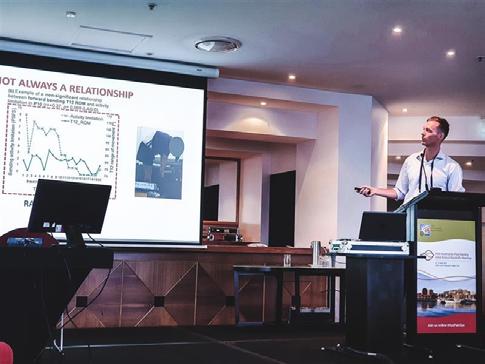 BLOG WEB
BLOG WEB
enjoyed.
I can’t wait to come back next year and learn about all the things everyone has been up to, as well as hopefully share some of the work that I’ve been involved with!
Declaration
I really enjoyed the morning run club and have kept in contact with some of the fellow running-delegates since we found out we both have an interest in digital health. Speaking of digital health, my most memorable presentations at the event were the ones during the ‘Digital Health Interventions for Pain Management’ topical sessions. The ability to help people (no matter their location) in an accessible and affordable way at scale is really inspiring.
Kevin would like to acknowledge the generous support he received from his PhD supervisors (Peter Kent, Peter O’Sullivan, Anne Smith, and Amity Campbell) as well as an Australian Government Research Training Program Scholarship that supported his capacity to undertake his PhD research. Kevin’s research was supported by a Physiotherapy Research Foundation (PRF) Project Grant from the Australian Physiotherapy Association.

Please join us for an Australian Pain Society (APS) social event!
Come along and catch up with your local APS colleagues and learn more about what other people are doing in your state.
In fact, if you have friends/colleagues with an interest in pain management but who are not members of the APS, why not bring them along too, so that they can connect with the APS community and find out more about how the APS can help support them.
The evenings will be largely unstructured so you can focus on meeting and connecting with others.
Hope you can make it!
Trudy Maunsell, APS PresidentLAUNCESTON - WED 2 NOVEMBER 2022

5.30 – 7.30pm
Peppers Silo Hotel 89 - 91 Lindsay St, Invermay RSVP here!
5.00 – 7.00pm
Prince Lane Bar – Rooftop Bar 356 Murray St, Perth RSVP here!
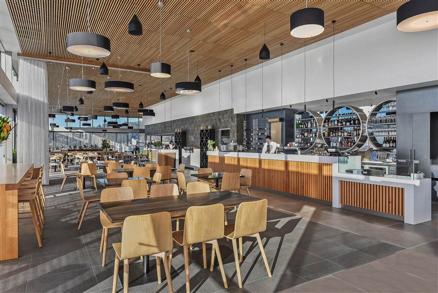
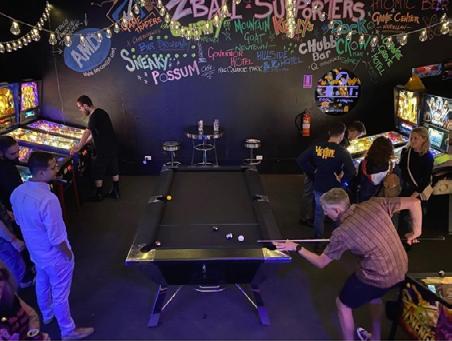

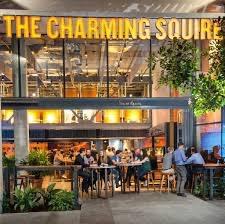
113-115 Regent St, Redfern RSVP here!
WATCH THIS SPACE!
VIC & SA events are being organised, more details to follow…
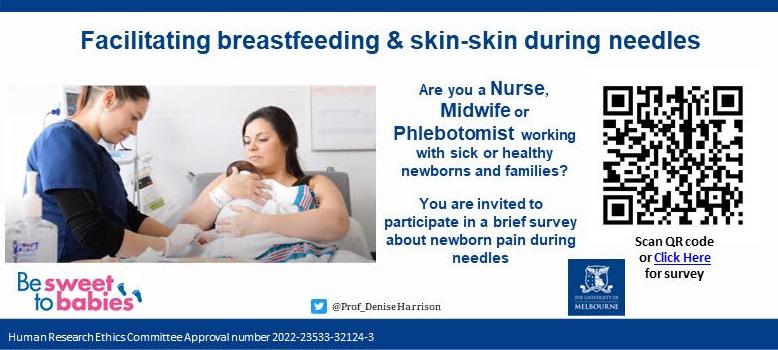
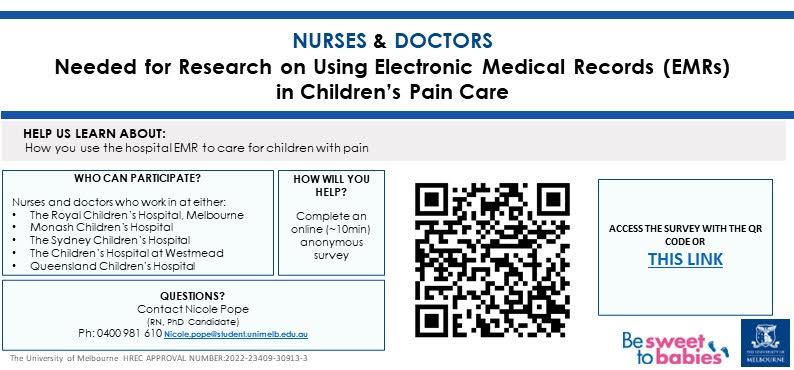
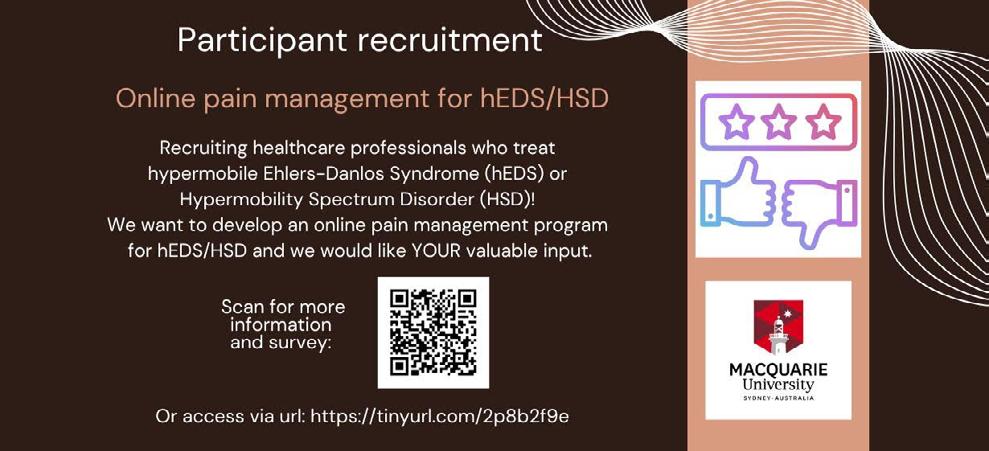
Soft, bioresorbable coolers for reversible conduction block of peripheral nerves
Journal Reference: Reeder, J. T., Xie, Z., Yang, Q., Seo, M. H., Yan, Y., Deng, Y., Jinkins K., Krishnan S., Liu C., McKay S., Patnaude E., Johnson A., Zhao Z., Kim, M., Xu Y., Huang I., Avila R., Felicelli C., Ray E., Guo X., Ray W., Huang Y., MacEwan M., & Rogers, J. A. (2022). Soft, bioresorbable coolers for reversible conduction block of peripheral nerves. Science, 377(6601), 109-115.
DOI: 10.1126/science.abl8532
Reviewer: Dr. Felix Peter Aplin, Research Fellow, The University of New South Wales
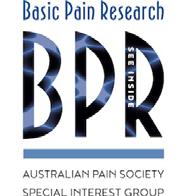
Review of article
Implantable neuromodulation strategies for the treatment of pain are becoming more widely accepted as alternatives to pharmaceutical pain management. While this has historically focused on second-line treatments for chronic pain (for example, electrical spinal cord stimulation), there has been a recent push towards neuromodulation for acute pain to reduce opioid prescription following surgery. This 2022 study by Reeder et al. describes a new form of peripheral neuromodulation device that delivers cooling, rather than electricity, to the sciatic nerve with the intention to reduce nociceptive signal conduction. Importantly, this device is described as fully bioresorbable, which removes the need to perform an explant surgery after treatment has concluded –previously a significant stumbling block for acute implanted neuromodulation approaches.
Study group
While primarily an engineering paper, a small cohort of adult male Sprague Dawley rats with a spared nerve injury model were used to
validate the nerve block and biocompatibility of the device. Sample sizes varied between conditions but were universally at or below statistical minimums (n= 2-4).
Aims
This study aimed to characterise and provide preliminary validation for a new type of implanted neuromodulation device that can inhibit peripheral nerve activity using a cooling effect, while remaining biocompatible and fully bioresorbable.
Method
The study methodology is comprised of three parts: firstly, the authors described the basic function and fabrication of the device, which uses microfluidic evaporative cooling combined with a temperature sensor integrated into a flexible elastomer cuff. They then examined the spatiotemporal thermal characteristics of the active device in water and a nerve-analogue to determine the level of fine control achievable. Finally, as a proof of concept for a functional device, they performed acute and chronic in-vivo rat experiments at the sciatic nerve through a combination of electromyography, compound nerve potential recordings, behavioral responses (mechanical nociceptive threshold) and basic histology.
Results
The main focus of the results was on the demonstration of fine temperature control using the temperature sensing feedback system integrated into the device. The authors demonstrate that the device is capable of highly localised and controllable temperature changes at a nerve analogue, and that the device does break down over time in a
(simulated) 3-6 months, as intended. The acute animal model experiments demonstrate that the active device reversibly reduces measures associated with nerve conduction, and that this produces an increase in nociceptive mechanical thresholds. Furthermore, no obvious damage out to 3 months was observed in the rat sciatic nerve when examined with crude histology.
Conclusions
The authors conclude that their results demonstrate a novel form of peripheral nerve cooling leading to conduction block, with fine spatiotemporal control and a soft, bioresorbable implantable component. They argue that this device provides a proof-of-concept for a novel form of acute targeted pain relief as an alternative to opioid prescription.
Reviewer’s critique & take home messages
The engineering components of the study were extremely thorough and wellconstructed. This reviewer does not doubt from the evidence provided that this device is capable of precise control of nerve temperature. The biology components of this study applied a broad yet shallow range of validation methods. The authors manage to convince this reviewer of an effect only
by the breadth of evidence – the low sample sizes and described data for each individual validation method are not convincing in isolation. The mechanistic interpretation of these neurophysiology results in this paper is not convincing – the authors argue that reductions in nerve responses and increased behavioral thresholds are evidence of nerve conduction block, but the papers they cite do not show block relationships similar to those shown in their results, and the temperatures demonstrated in-vivo are not sufficient for full conduction block. Regardless of this limitation, overall, this paper still demonstrates a functional potential for analgesia. It describes a novel and creative approach to peripheral neuromodulation for targeted pain reduction which may have the potential for rapid clinical translation given the straightforward, biocompatible design.
Declaration
The reviewer has no conflicts of interest to declare.
BPR Pain Hour:
Transcriptomic and physiological characterization of human sensory neurons that transduce pain and itch
12-1pm AEDT, Wednesday 23 November 2022 (via Zoom)
The purpose of our Basic Pain Research Special Interest Group (BPR SIG) is to share, improve, and promote scientific knowledge and understanding of the mechanisms of nociception and pain across all levels of investigation, from molecular and cellular analyses to preclinical or clinical studies.

This forum will provide an informal platform to promote and share our research and insights, from ECRs (including students) and senior colleagues.
Session 6: Transcriptomic and physiological characterization of human sensory neurons that transduce pain and itch
Summary:
This session will explore the diversity of human primary sensory neurons of the dorsal root ganglia with a nod to comparing human and rodent models and will include presentations from A/Prof Steve Davidson from Cincinnati and Dr Lipin Loo in Sydney. The focus of A/Prof Davidsons talk will be on neuronal subtypes that likely encode pain and itch. Following this will be an overview of human sensory neuron physiology with a focus on sensitization and inhibition of activity by G-protein coupled receptor. Dr Loo will speak about his research which focuses on profiling Cellular and Molecular Mechanisms of Neuropathic Pain with Integrated Transcriptomics.
The invited speakers:
• Steve Davidson, PhD is an Associate Professor of Anesthesiology at the University of Cincinnati College of Medicine. He began investigating pain and itch over 15 years ago using electrophysiology in the monkey brain and spinal cord and then developed approaches to recover and investigate live human dorsal root ganglia from human organ donors. The Davidson lab also has an interest in thalamo-cortical circuits that process pain and itch.
• Dr Lipin Loo joined the University of Sydney as a Dr John and Anne Chong Genome Editing and Stem Cell Research Fellow and his primary interest is studying the complex process of neuronal differentiation. Lipin received his PhD in Pharmacology from University of Iowa in 2013. He received postdoctoral training in the Zylka lab at the Neuroscience Center of University of North Carolina from 2014 to 2017.
All are welcome to attend, including postgraduate students. We look forward to seeing you there, please register here
A Quality Improvement Project on Pain Management at a Tertiary Pediatric Hospital
Thank you to APS member Denise Harrison and her Canadian colleagues from the Children’s Hospital of Eastern Ontario (CHEO), Jodi Wilding, Hailey Scott, Victoria Suwalska, Zarina Geddes, Carolina Lavin Venegas, Deborah Long, Gail Macartney, Mary MacNeil, Brenda Martelli, Deborah Mervitz, Jessica Reszel, Carol Theoret-Douglas and Nora Ullyot for sharing the following recent publication.
Article first published online: 8 November 2021
Journal Reference: Wilding J, CHEO Assessment and Pain Management Team and Harrison D. A quality improvement project on pain management at a tertiary pediatric hospital. Canadian Journal of Nursing Research. 2022, Vol. 54(3) 357–368. https://doi. org/10.1177/08445621211047716
DOI: https://doi.org/10.1177/08445621211047716
Abstract
Objective
To assess and improve pain management practices for hospitalised children in an urban tertiary pediatric teaching hospital.
Design
Pre-Post Quality Improvement study
Setting
One tertiary referral children’s hospital in Canada
Subjects
Hospitalised children and their families/ caregivers
Methods
Health Quality Ontario Quality Improvement (QI) framework informed this study. A pre (T1) – post (T2) intervention assessment included chart reviews and children/caregiver surveys to ascertain pain management practices. Information on self-reported pain intensity, painful procedures, pain treatment and satisfaction were obtained from children/
caregivers. Documented pain assessment, pain scores, and pharmacological/nonpharmacological pain treatments were collected by chart review. T1 data was fed back to pediatric units to inform their decisions and pain management targets.
Results
At T1, 51 (58% of eligible participants) children/caregivers participated. At T2, 86 (97%) chart reviews and 51 (54%) children/ caregivers surveys were completed. Most children/caregivers at T1 (78%) and T2 (80%) reported moderate to severe pain during their hospitalisation. A mean of 2.6 painful procedures were documented in the previous 24 h, with the most common being needlerelated procedures at both T1 and T2. Pain management strategies were infrequently used during needle-related procedures at both time points.
Conclusions
No improvements in pain management as measured by the T1 and T2 data occurred. Findings informed further pain management initiatives in the participating hospital.
Implications/Discussion
Data are being used by the hospital as part of an organisational best practice guideline project, aimed at implementing best pain management practices for hospitalised children.
Declaration
Denise Harrison received a CHEO Quality Improvement Grant ($CAD 9,998.72) in 2017 to support this research.
Opioid deprescribing: qualitative perspectives from those with chronic non-cancer pain
Thank you to APS members Stephanie Mathieson and Fiona Blyth, and their colleagues Danijela Gnjidic, Christine Lin, Jesse Jansen, Kristie Weir, and Christina AbdelShaheed for sharing the following recent publication.
Article first published online: 5 August 2022
Journal Reference: Hamilton M, Gnjidic D, Lin C, Jansen J, Weir KR, Abdel-Shaheed C, Blyth F, Mathieson M. Opioid deprescribing: qualitative perspectives from those with chronic non-cancer pain. Research in Social Administrative Pharmacy. 2022.
DOI: https://doi.org/10.1016/j.sapharm.2022.07.043
Abstract
Aim
Chronic non-cancer pain is a major cause of disability worldwide and is associated with reduced productivity and quality of life. Approximately one quarter of primary care consultations involve chronic pain presentations, with patients often being dissatisfied with treatment plans, particularly those involving opioid analgesics. Deprescribing is the systematic process of discontinuing medications when the harms outweigh the benefits. This study aimed to identify barriers and facilitators in people with chronic non-cancer pain when deprescribing opioid analgesics, and their views on resources that assist with deprescribing.
Design
Qualitative study Setting Community
Subjects
Adults with chronic non-cancer pain
Methods
A purposive sampling strategy was used to recruit 19 adults with chronic non-cancer pain from the community who were, or had been, on long-term opioid therapy. Recruitment continued until thematic saturation was achieved. Semistructured telephone interviews were conducted. A five-step framework and thematic analysis method identified themes for each study aim.
Results
Themes identifying barriers to opioid deprescribing raised challenges of a lack of available alternatives, managing opioid dependency and withdrawal symptoms or inability to function without opioids when in extreme pain. Facilitating themes described the value of support networks, including a trusting doctor-patient relationship and finding individual coping strategies to address deprescribing barriers. We explored a variety of resources from electronic forms such as websites and apps to paper-based or face to face. Participants expressed that whatever the form, resources need to be educational, but also simple and engaging.
Conclusions
Most people suffering from chronic non-cancer pain expressed dissatisfaction with being on opioids, but most were still unwilling to deprescribe due to insufficient alternatives, a lack of support from their doctors and lack of information about the deprescribing process. Deprescribing can be facilitated by improving supportive networks and strategies and providing simple and positive educational resources.
Implications/Discussion
Our findings suggest that opioid deprescribing is a unique experience to every individual. Some participants from our study were unwilling to deprescribe when they were functioning well while taking opioids and feared their pain would increase and interfere with their daily life. However, the same view is not shared by all, as other participants from our study said that opioids interfered with their ability to function more than the pain. These contrasting responses highlights that deprescribing needs to be personalised to address the perceived benefit versus harm ratio in individuals.
Many participants from our study perceived they had been insufficiently informed, supported or not involved in shared decision making with
BLOG WEB
their doctors. In contrast, participants from our study who expressed having a trusting relationship with their doctors articulated improvements in pain management when they felt supported and empowered during the deprescribing process. Therefore, the impact of providing support and education on people’s self-efficacy should not be undervalued and are valuable considerations for clinicians when initiating conversations on deprescribing.
Declaration
All authors have no conflicts of interest to declare. We received $10,000 in funding from The Australian and New Zealand Musculoskeletal Clinical Trials Network to aid participant recruitment for this study.
Have you had an article accepted for publication recently?
The Australian Pain Society (APS) is keen to share publications from our members with their colleagues via our eNewsletter. If you’ve had an article accepted or published recently, please contact our Assistant Editor Joanne Harmon via the APS Secretariat (aps@apsoc.org.au) with the title, authors, and reference (i.e., journal, volume, and DOI) of your article and request the submission template. We would love it if you also supply a short commentary (300 words max) to give our readers the gist of the article.
Zoe And Zak’s Pain Hacks Book Series 1-5
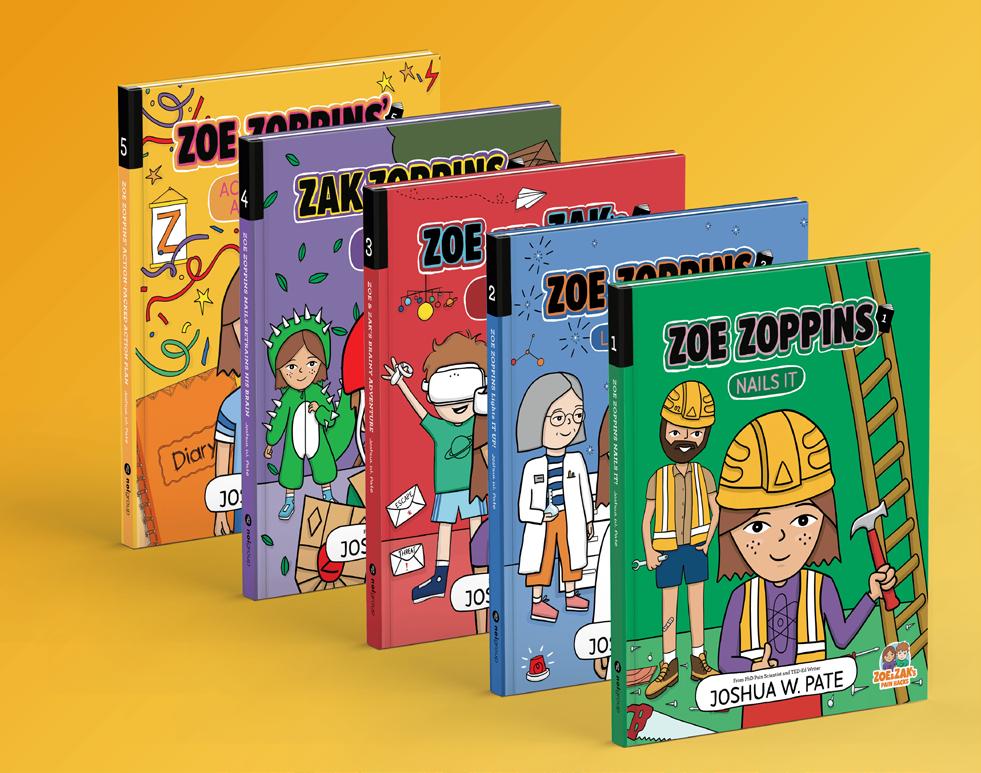
Thank you to APS member Joshua Pate for sharing the following recent publication.
Article first published online: 1 September 2022
Journal Reference: Pate JW. (2022). Zoe and Zak’s Pain Hacks Book Series 1-5. Noigroup Publications.
URL: https://www.noigroup.com/product/zoeand-zaks-pain-hacks/
Abstract
Background
Pain is complex and can be difficult to talk about, especially persistent pain – pain that has
persisted for longer than expected. Zoe and Zak’s Pain Hacks is a series of five books designed to help children learn and talk about pain with their family, friends, teachers and health professionals. The first four books each address one key target concept, the fifth book brings these learning outcomes together with an empowering action plan. Used together, these books enable targeted pain science education.
Declaration
JWP receives royalties for books related to paediatric pain education. He has received speaker fees for lectures on pain and rehabilitation.
Congratulations to our Successful PhD #6 Scholarship Recipient - Emily Moore
Emily is a Physiotherapist with a strong interest in effective paediatric pain management.
She has two honours degrees – in Psychology and in Physiotherapy – and works in the paediatric sector as a Physiotherapist and clinical educator for the University of South Australia. Whilst studying these degrees, she worked various positions within the disability and rehabilitation sectors, later assisting with multiple research projects with Body in Mind Research Team at the University of South Australia.
She has led and presented two research projects which focused on educational concepts that will guide future material on Complex Regional Pain Syndrome (CRPS). She had the opportunity to present her findings at the latest Australian Pain Society Annual Scientific Meeting in 2022.
She now focuses on her PhD, which seeks to investigate how children living with cerebral palsy (CP) and complex communication needs (CCN) can better self-report their pain.

Announcing the Lowitja Institute’s Aboriginal and Torres Strait Islander Major Grants Round for 2022-25!

The purpose of the Major Grant round is to support innovative and responsive community research led by Aboriginal and Torres Strait Islander community controlled organisations to improve the health and wellbeing of Aboriginal and Torres Strait Islander people.
This research will influence policy and practice through the rapid translation of community priorities for improved outcomes for Aboriginal and Torres Strait Islander health and wellbeing. As well as support the capability and capacity building of Aboriginal and Torres Strait Islander organisations to do their own research, their way.
The funding of the Lowitja Institute
Aboriginal and Torres Strait Islander Grant is for two years. The research projects must be no longer than the funding timeframe and total maximum amount available per project is $200,000. An additional Knowledge Translation grant of $20,000 will be offered to each project that is successful in the grant round. This will be offered after the completion of the first year of the project and will assist in getting the right message to the right audience to achieve research impact.
To read the full grant guidelines and find out more about the application process, go to the Lowitja Institute website. Applications close on 21 November 2022!
NEW eBook!

Pain in Residential Aged Care Facilities: Management Strategies
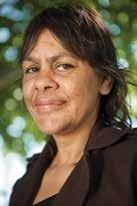
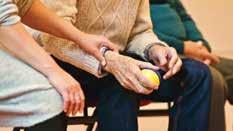
2nd Edition
The gold standard in Pain Management for Older People is now available in eBook format!
In this edition:
Chapter 1: About Pain
Chapter 2: Identi cation and assessment of pain in aged care residents

Chapter 3: Beyond medication: psychological and educational approaches to pain management
Chapter 4: Movement and physical activity
Chapter 5: Complementary approaches to pain
Chapter 6: Pharmacological treatments
Chapter 7: Dementia and cognitive impairment: special considerations

Chapter 8: Pain at the end of life
Chapter 9: Pain and nutrition
Chapter 10: Quality and systems issues
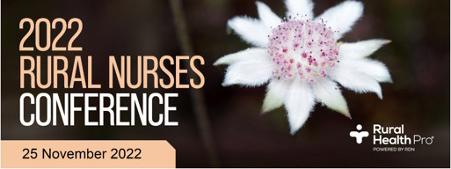





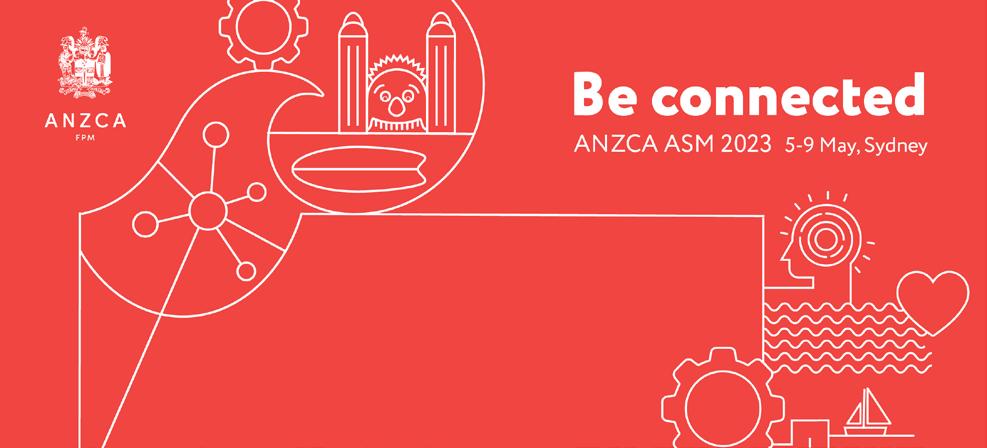

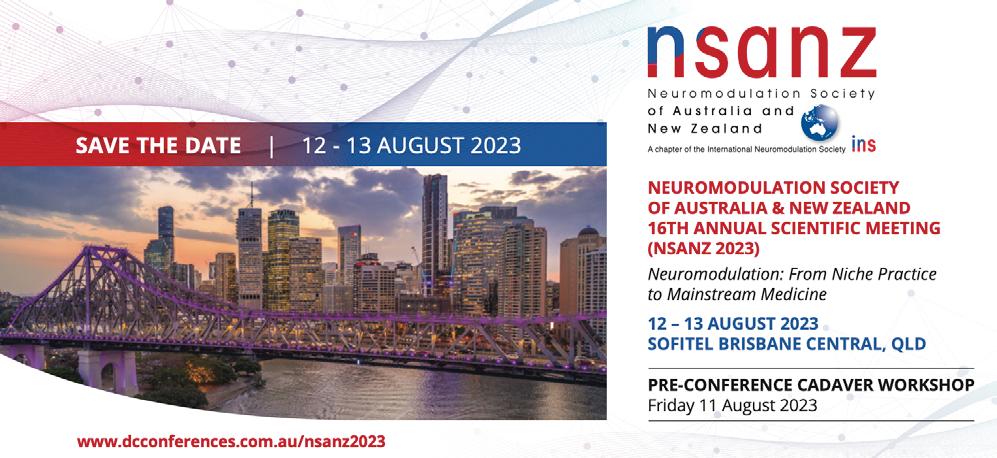
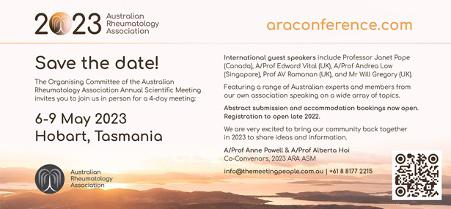
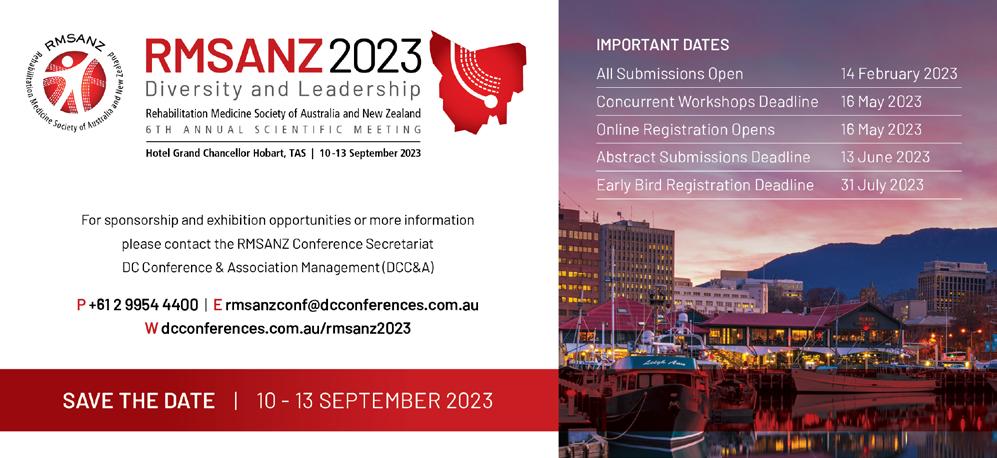
NEW!
> Medicare Benefits Schedule (MBS) amendments effective 01 Novembers 2022: http://www.mbsonline.gov.au/ internet/mbsonline/publishing.nsf/Content/ Downloads-221101
Other items of interest for our members:
> Latest opioid data from the Australian Bureau of Statistics: Opioid induced deaths in Australia. https://www.abs.gov.au/ articles/opioid-induced-deaths-australia
> Australia’s annual overdose report 2019 from the Pennington institute : http:// www.penington.org.au/australias-annualoverdose-report-2019/
> The Third Australian Atlas of Healthcare Variation: This series explores how healthcare use in Australia varies depending on where people live. It investigates reasons for variation that may be unwarranted, and provides specific achievable actions to reduce unwarranted variation. https://www.safetyandquality.gov.au/atlas
> Painaustralia eNewsletter latest issue, available online at http://www.painaustralia. org.au/media/enews
> ePPOC: electronic Persistent Pain Outcomes Collaboration: The electronic Persistent Pain Outcomes Collaboration (ePPOC) is an Australasian initiative that aims to improve the quality of care and outcomes for people who experience chronic pain. For more information about ePPOC, refer to the website: http://ahsri. uow.edu.au/eppoc/index.html
> PainHEALTH website: painHEALTH‘s aim is to help health consumers with musculoskeletal pain access reliable, evidence-based information and tips to assist in the co-management of musculoskeletal pain. painHEALTH is an initiative of the Department of Health, Western Australia. http://painhealth.csse.uwa.edu.au/
> Stanford University: CHOIR Collaborative Health Outcomes Information Registry https://choir.stanford.edu/
BLOG WEB
> Opioid Podcasts for GPs: These podcasts are produced by David Outridge GP, and FAChAM Trainee as a project under the auspices of Dr Steven Kelly Staff Specialist in Addiction Medicine, Kullaroo Clinic Gosford. A 20 week series from the Hunter Postgraduate Medical Institute (University of Newcastle) : http://www.gptraining.com.au/ recent-podcasts
> Airing Pain: Pain resources via an online radio show produced by Pain Concern, a UK registered Charity: http://painconcern.org.uk/ airing-pain/
> Indigenous Resources: New webpage on the APS website aggregating Indigenous resources: https://www.apsoc.org.au/ Indigenous-Resources
NPS MedicineWise resources:
> Choosing Wisely Australia – News & media: https://www.choosingwisely.org.au/ news-events/media-releases/choosingwisely-resource-addresses-patient-opioidknowledge-gap
> Over the counter codeine – changes to supply: https://www.nps.org.au/medical-info/ clinical-topics/over-the-counter-codeinechanges-to-supply
> Medicines with codeine – what you need to know: https://www.nps.org.au/medical-info/ consumer-info/medicines-with-codeinewhat-you-need-to-know
> Information about opioids and chronic noncancer pain: U-tube clip (5.39mins) https:// www.youtube.com/watch?v=8R4RT0pUCf 4&feature=share&fbclid=IwAR2dbhzgEAcc 7B-ogq2a6Xhud5FDkbciPbdJ9pb94GnQI6p AeifGd1VP-_I
> Opioids: Communications videos: https:// www.nps.org.au/opioids-communication-videos
TGA
> Codeine information hub: https://www.tga. gov.au/news/news/codeine-information-hub
NSW Agency for Clinical Innovation resources:
> Brainman and Pain Tool Kit translations, SEP15: http://www.aci.health.nsw.gov.au/ chronic-pain/translated-resources
New Members
New Members as at 25 October 2022:
> Pain Management Resources: https:// aci.health.nsw.gov.au/networks/painmanagement/resources
> Quicksteps to Manage Chronic Pain in Primary Care: http://www.aci.health.nsw. gov.au/chronic-pain/health-professionals/ quick-steps-to-manage-chronic-pain-inprimary-care
> Built into Quicksteps: “How to de-prescribe and wean opioids in general practice”: http:// www.aci.health.nsw.gov.au/chronic-pain/healthprofessionals/quick-steps-to-manage-chronicpain-in-primary-care/how_to_de-prescribe_and_ wean_opioids_in_general_practice
> A list of helpful apps for consumers and clinicians now available at: http://www.aci. health.nsw.gov.au/chronic-pain/healthprofessionals/management-of-chronic-pain
> Chronic Pain in the ED: https://www.aci. health.nsw.gov.au/networks/eci/clinical/ clinical-resources/clinical-tools/painmanagement/chronic-pain-in-the-ed
Ms Emel Ahmet Psychology
Ms Selina Chupova Nursing
Mr Oliver Crossley Physiotherapy
Mr Connor Gleadhill Physiotherapy
Miss Karime Mescouto Physiotherapy
APS Membership Renewals 2023
Renewal notices for 2023 will be sent by email to members in late November.
Thank you for your continued support and membership of the APS.
Please note:
1. We understand that circumstances change, so each year we ask you to select your appropriate level of membership.
2. This system of self-reporting subscription levels was implemented in 2009 for the benefit and fairness of all members.
3. There has been a small increase applied to the 2023 membership fees.
Please refer to the rates below for your 2023 membership fee:
a. Regular A $120 (was $110)
b. Regular B $230 (was $205)
c. Regular C $370 (was $310)
d. Retired $65 Concessional Rate
e. Student $65 Concessional Rate
Before renewing, please ensure you review and update your member profile online.
Payments can be made by Credit Card, BPAY, or Cheque.
Did you know that the Australian Pain Society is a registered charity with ACNC? Your donation will help the Society to promote the prevention and control of diseases in human beings associated with pain.
All donations of $2 or more to APS are tax-deductible.
Calendar of Events
13-17 November 2022
Australian Pain Society
painSTAR - Pain School for Translation And Research
Novotel Barossa Valley, Adelaide Hills, SA
https://dcconferences.eventsair.com/painstar
15-16 November 2022
National Rural & Remote Allied Health SARRAH Conference 2022
People, Purpose, Passion: Pathways to Success Virtual, Online Conference
https://sarrahconference.com.au/
25 November 2022
Royal Australian College of General Practitioners (RACGP)
2022 Rural Nurses Conference
Crowne Plaza Sydney
Coogee Beach, Sydney, NSW
5 May 2023
Australian and New Zealand College of Anaesthetists & Faculty of Pain Medicine
2023 FPM Symposium - Moving Forward International Convention Centre (ICC), Sydney, NSW
https://www.anzca.edu.au/events-courses/ events/major-events/fpm-national-events/2023faculty-of-pain-medicine-symposium-(1)
6-7 May 2023
Exercise & Sports Science Australia (ESSA)
2023 ESSA - Innovation & Practice Forum
Novotel Sunshine Coast Resort, Sunshine Coast Twin Waters, QLD
https://www.essaforum.com.au/
11-13 August 2023
BLOG WEB
https://web.cvent.com/event/5fdc11ff-97b7-48c7b992-4147d22cceff/summary
25-27 November 2022
Rural Health Pro and APNA GP22
Melbourne Convention & Exhibition Centre, Melbourne, VIC
https://www.racgp.org.au/gp22/gp22-home
23-26 March 2023
New Zealand Pain Society
NZPS 2023 “Designing a Better Future”
The Cordis Hotel, Auckland, NZ
https://www.nzps2023.nz/
2-5 April 2023
Australian Pain Society
APS 2023 43rd Annual Scientific Meeting
In the IASP Global Year for Integrative Pain Care National Convention Centre, Canberra, ACT https://www.dcconferences.com.au/aps2023/
Neuromodulation Society of Australia and New Zealand
NSANZ 2023 16th Annual Scientific Meeting - Neuromodulation: From Niche Practice to Mainstream Medicine
Sofitel Brisbane Central, Brisbane, QLD
http://www.dcconferences.com.au/nsanz2023
10-13 September 2023
Rehabilitation Medicine Society of Australia & New Zealand
RMSANZ2023 6th Annual Scientific MeetingDiversity and Leadership Hotel Grand Chancellor, Hobart, TAS
https://www.dcconferences.com.au/rmsanz2023/ home
20-23 September 2023
European Pain Federation EFIC 13th Congress
Personalised Pain Management: The future is now Budapest, Hungary
https://europeanpainfederation.eu/efic2023/
Vision, Purpose & Priorities
Vision:
All people will have optimal pain management throughout life.
Purpose:
The Australian Pain Society is a multidisciplinary association whose purpose is to advance pain management through education, research, and advocacy for transformational improvements in clinical care.
Priorities:
In order to achieve our purpose, the Australian Pain Society will provide:
> Membership
> Research
> Education
> Services and resources
> Good governance and operations
> Advocacy
Directors
President:
Ms Trudy Maunsell
Acute Pain Service
Princess Alexandra Hospital
Woolloongabba QLD 4102
Tel: 07 3176 5547 Fax: 07 3176 5102
President-Elect:
Mrs Joyce McSwan
Gold Coast Primary Health Network
Persistent Pain Program,
QLD and PainWISE
Tel: 0412 327 795 Fax: 07 3539 9801
Secretary:
Mrs Dinah Spratt
Physiotas Physiotherapy
Shearwater TAS 7307
BLOG WEB
Tel: 03 6428 7500 Fax: 03 6424 7811
Treasurer
Dr Laura Prendergast

Pain Service, Northern Health
Broadmeadows VIC 3047
Tel: TBA Fax: N/A
ACT Director:
Dr Andrew Watson

Calvary Hospital
Canberra ACT 2617
Tel: 02 6201 6352 Fax: N/A
NSW Director:
Dr Tim Ho

Inner West Pain Centre
RPA Medical Centre
Newtown NSW 2042
Tel: 02 9517 1764 Fax: 02 9517 1832
NT Director:
A/Prof Cindy Wall








Charles Darwin University
Casuarina NT 0810
Tel: 08 8981 7046 Fax: N/A
QLD Director:
Mrs Karalyn Huxhagen
KH Pharmacy Consulting
Mackay QLD 4740
Tel: 0418 185 972 Fax: 07 4805 6155
SA Director:
Dr Michelle Harris
Royal Adelaide Hospital and Lyell McEwin Hospital
Adelaide SA
Email: michelle.harris2@sa.gov.au
TAS Director:
Ms Bernadette Smith
Psychology Plus
South Burnie TAS
Tel: 03 6431 9959 Fax: 03 6431 9950
VIC Director:
Dr Esther Dube

Austin Health
Heidelberg VIC 3084
Tel: 03 9989 1676 Fax: N/A
WA Director:
Ms Jacintha Bell
Lifeworks Occupational Therapy
Subiaco WA 6008
Tel: 0451 178 880 Fax: 08 6323 3329
Office Bearers
Immediate Past President:
A/Prof Anne Burke
Central Adelaide Local Health Network
Royal Adelaide Hospital
Adelaide SA 5000
Tel: 08 7074 2835 Fax: 08 7074 6247
SPC Chair:
Professor Kevin Keay



Department of Anatomy
University of Sydney
Sydney NSW 2006
Tel: 02 9351 4132 Fax: 02 9351 2817
IASP Liaison:
Professor Michele Sterling
Recovery Injury Research Centre
University of Queensland
Herston QLD 4092
Tel: 07 3346 4793
Communications Coordinator:
Ms Trudy Maunsell
Acute Pain Service
Princess Alexandra Hospital
Woolloongabba QLD 4102
Tel: 07 3176 5547 Fax: 07 3176 5102
Newsletter Editor:
Dr Lincoln Tracy
School of Public Health and Preventive Medicine
Monash University
Melbourne VIC 3004
Tel: 03 9903 0288
Newsletter Assistant Editor:
Dr Joanne Harmon




School of Clinical and Health Sciences
University of South Australia
Adelaide SA 5000
Tel: 08 8302 1442
Scholarship/Grant Selection Subcommittee Chair:
Dr Michael Farrell
Retired
VIC Secretariat:
DC Conference & Association
Management Pty Ltd
PO Box 637
North Sydney, NSW 2059
Tel: 02 9016 4343
Email: aps@apsoc.org.au
Website: apsoc.org.au

